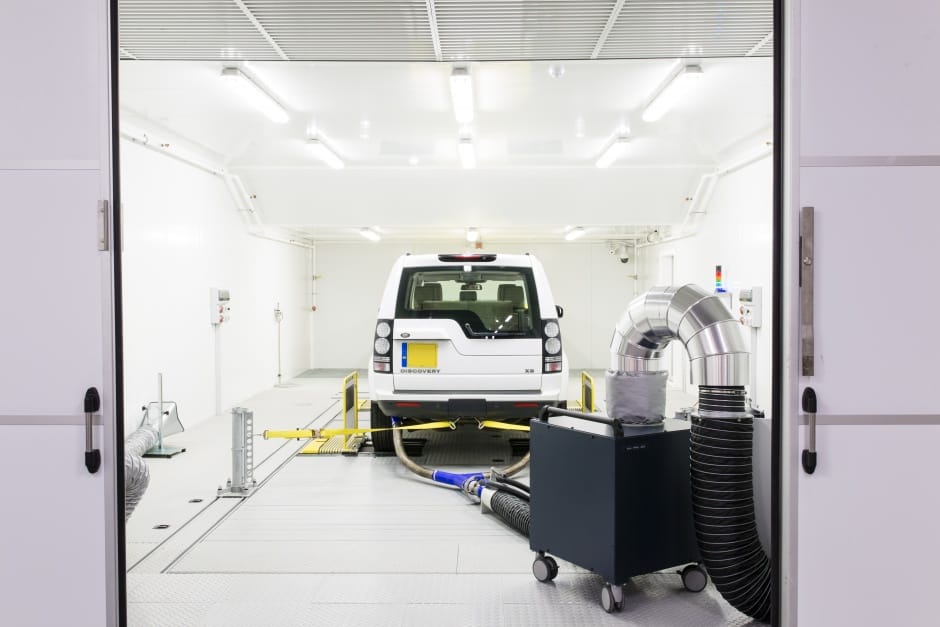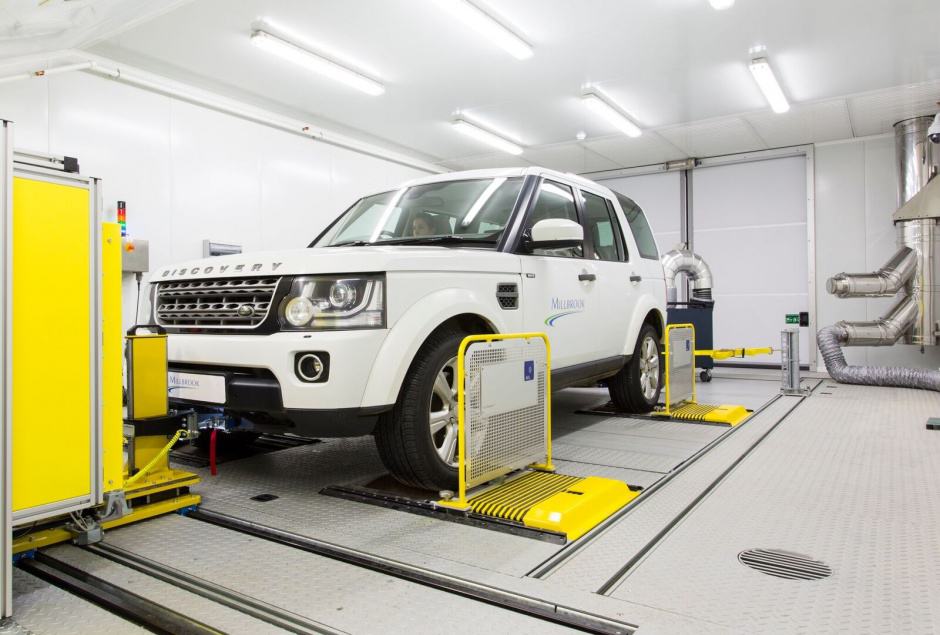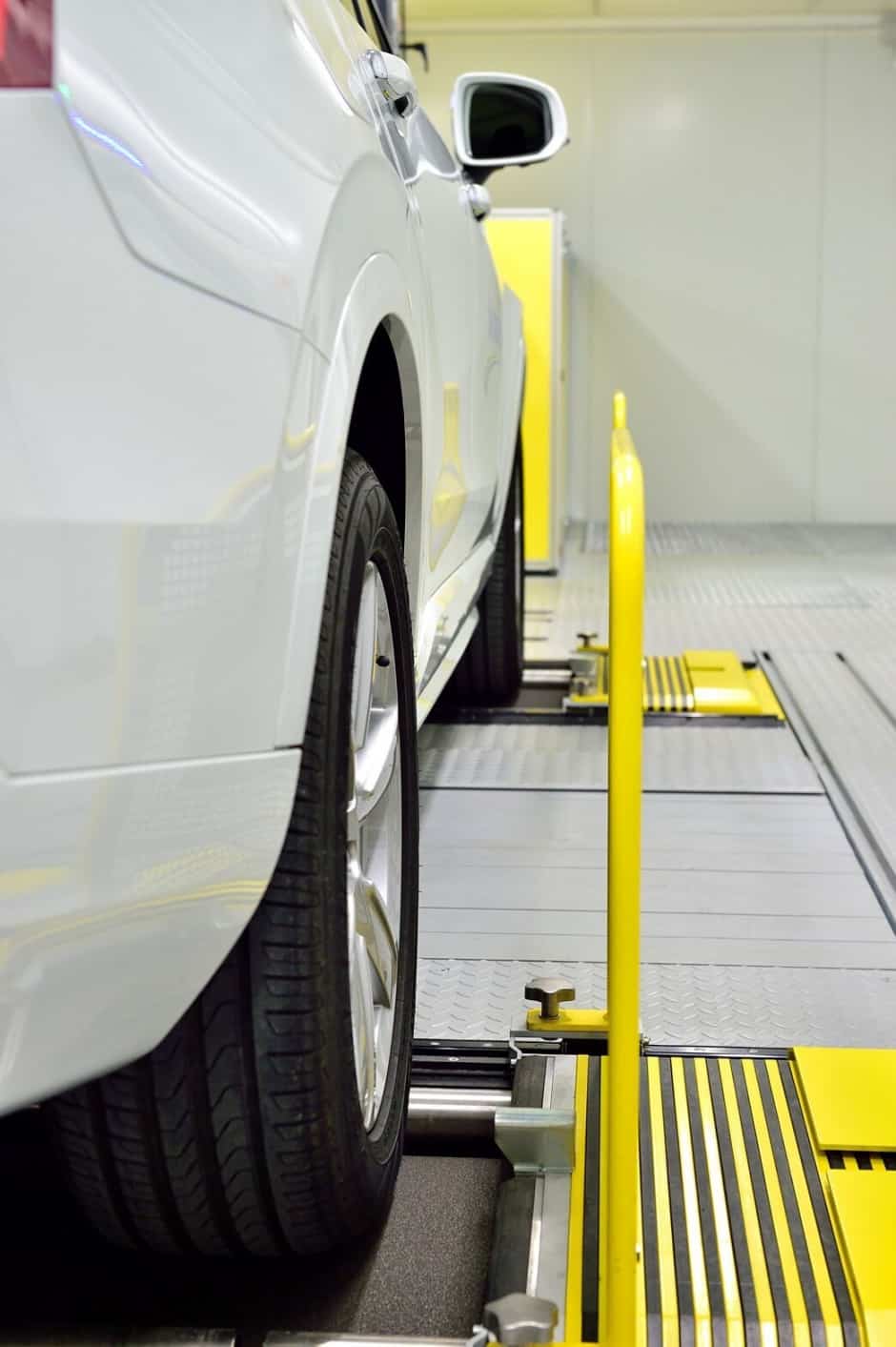One area of engineering in which intensive physical testing of products continues to be an essential element of their development process is automobiles. Digital procedures, for instance, simply cannot measure actual exhaust emissions. But at the same time taking cars to different locations to test them in varying environmental conditions is time-consuming and expensive. The obvious solution, therefore, is testing of real vehicles in automated cells that can simulate outdoor conditions.

In the UK a prime location for such work is Millbrook Proving Ground in Bedfordshire. Besides having around 70km test-tracks the site also houses several indoor test facilities of which the latest was commissioned in the last few weeks of 2016. This is a new climatic emissions 4WD dynamometer - in other words a temperature-controlled chamber which can accommodate whole vehicles while their engines are run and their emissions monitored. In themselves such installations are not unusual but according to Millbrook Group president Alex Burns this one represents the current state-of-the-art for automotive dynamometers in ways that make it “an important strategic facility for UK plc”.
Perhaps the facility's most fundamental attribute is that it can cope with four-wheel drive vehicles – an apparently simple capability but one that is nevertheless highly unusual. Another is the wide range of temperatures that can be created within the chamber – from -20°C to +50°C.

As chief engineer – powertrain at Millbrook Phil Stones points out this is again quite distinct from normal previous practice, for which the legislative requirement is that testing should be carried out between 20°C-30°C and which in the case of Millbrook has become established as a single reference temperature of 23°C.
The consequence, he explains, is therefore a highly flexible installation that can carry out testing that simulates the variability of “real world conditions” not just on all forms of conventional internal combustion engine vehicles but also on hybrid and even all-electric vehicles – in the latter case by checking the overall efficiency of their propulsion systems rather than emissions.
Moreover real world developments – both legislative and technical – mean that these attributes will become increasingly pertinent. On the first, explains Stones, relevant European legislation is now moving towards a requirement for what is termed a Real Driving Emissions (RDE) level of accuracy in recording engine emissions. In practice this will mean that though actual certification procedures will necessarily have to be carried out in real on-road conditions the near-exact accuracy of prior test-cell development work will become particularly crucial. Forthcoming European RDE legislation, for instance, will require testing at temperatures of upto 35degC.
Engineers always love having more data.
On the second Stones identifies the likely increasing use of hybrid powertrains as the crucial factor – the point being that they are much more complex than counterparts that use only one type of primary motive technology. Such vehicles operate, he observes, in “many more strategies” - for instance whether the internal combustion engine involved is actually used to power the vehicle at times or is just a generator for the electric motor. “Complexity will be the driver,” he states emphatically. In any case, he adds, whatever the circumstances “engineers always love having more data.”
But on either count the capabilities of the new installation at Millbrook make it a powerful tool for relevant development and testing work. One of them, for instance, is that the installation can effectively simulate the effect on engine performance of climbing hills – as Stones observes “the real world is not flat.” This is possible because the installation is “fully transient”, in other words because each of the rollers on the which the wheels of the vehicle rest is linked to an electric motor that enables it to exert a continuously variable resistance or assistance to the motion of the wheels of the vehicle as they turn under power from the engine. The physical separation of the rollers can also be altered to enable the installation to cope with vehicles across a wheelbase range of 1.8m-4.6m.

Meanwhile another benefit provided by the range of capabilities the installation possesses is its ability to measure 'parasitic' energy losses – in other words the energy expended by systems such as air conditioning, which might be considerable in a country such as Saudi Arabia where, as Stones notes, the average daytime summer temperature is 45degC. Perhaps a more pertinent use for European conditions, though, might be measuring the energy consumed by the 'pre-heat' cycle that can be a feature of hybrid vehicles.
The chamber itself is capacious and measures 13m in length, 6.5m in width and 3.5m in height. Though it is not concerned with aerodynamics it also has a powerful fan for simulating the effect of air hitting the front of the vehicle when in motion with speeds and impact areas of 0.5m2 at 140km/h and 0.3m2 at 200km/h. The range of emissions can that can be sampled is also extensive and includes methane (CH4), carbon monoxide (CO), carbon dioxide (CO2), nitric oxide (NO), nitrous oxide (N2O) and nitrogen dioxide (NO2). The latter, by the way, is an example of how the installation is future-proofed against possible changes in the legislative landscape since, as Stones points out, “NO2 is not currently regulated.”
That future is one that Millbrook, as Alex Burns confirms, is currently investing in heavily. Around £10 million went into new indoor facilities in 2016, he says, with the 4WD dynamometer accounting for what he will only describe as a “substantial proportion” of that outlay – the precise figure remains confidential.
Moreover a further new facility is due to go into operation within the first couple of months of this year (2017) – a climatic chamber able to create temperatures as low as -50°C. The overall intention, Burns indicates, is to ensure that Millbrook's combination of indoor and outdoor test facilities – and in the case of the former especially the sheer range of environmental and road conditions they can simulate - will enable it to offer something close to a 'one-stop-shop' capability for relevant vehicle development operations. As he also notes, vehicle makers are increasingly looking to produce cars in which regional variations that aim to satisfy sometimes purely local aesthetic requirements are nevertheless based on “global platforms” that can comply with any current legislative demands. In that context the new dynamometer is a key element in Millbrook's strategy to ensure it will be an appropriately global player.





Project to investigate hybrid approach to titanium manufacturing
What is this a hybrid of? Superplastic forming tends to be performed slowly as otherwise the behaviour is the hot creep that typifies hot...